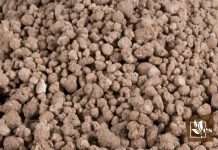Pressure-treated stakes are a pivotal component in various outdoor projects, from gardening to construction. I find that these stakes offer a high level of durability because they are treated to resist decay, pests, and weather elements. This treatment extends their service life and makes them ideal for providing structural support and stability to trees, plants, and landscape edgings.

When I select stakes for a project, I consider the material and treatment process because not all pressure-treated woods are created equal. For instance, pine is commonly used for tree stakes because it’s economical and widely available, with a treatment that guarantees protection against rot and insects. You’ll likely come across lodgepole pine, a choice that is not only cost-effective but also revered for its straight trunk, making it a reliable support for growing trees.
It’s crucial to handle pressure-treated timber with care, as some may have sharp edges or contain chemicals used during the treatment process. Safety precautions should be observed, such as wearing gloves and ensuring that any cutting or drilling of the wood is done in a well-ventilated area to avoid inhaling dust particles. Choosing the correct stake is a simple yet significant decision that can impact the success of your outdoor endeavors.
JUMP TO TOPIC
Choosing the Right Tree Stakes
When selecting the right tree stakes, it’s essential to consider both the benefits of pressure treated stakes and the specifics behind the wood pressure treatment process. These factors ensure the longevity and strength of the stakes you use.
Benefits of Pressure Treated Stakes
Tree stakes are not just a tool for support; the right tree stake can significantly impact the health and stability of a tree. I’ve found that pressure treated stakes are particularly beneficial for a few reasons.
- Resist decay and insect infestation due to the infused chemicals, thus ensuring a longer lifespan.
- Are robust and can withstand harsh environmental conditions much better than untreated wood.
- Offer better support for the tree, especially in formative years when it’s vulnerable to high winds or heavy weather.
The ACZA (Ammoniacal Copper Zinc Arsenate) is one treatment used for wood that can provide a high level of protection. The American Wood Protection Association (AWPA) provides standards for pressure treatment to which high-quality tree stakes adhere.
Understanding Wood Pressure Treatment
Pressure treating wood involves a process where chemicals that protect against rot, decay, and insect damage are forced into the wood, enhancing its durability. When I choose tree stakes, I focus on opting for wood that has been pressure treated according to AWPA standards to ensure quality.
It’s important to pick the proper tree stake options that align with the size of your tree and environmental conditions. Strong, pressure-treated stakes offer a blend of durability and practical support necessary for tree stabilization, making them an ideal choice.
Types of Tree Stakes
In choosing tree stakes, it’s essential to understand the differences between lodgepole tree stakes and I-posts, which are commonly used options that cater to specific needs.
Comparing Lodgepole to I-Posts
Lodgepole tree stakes are a popular choice that I often recommend for their durability and natural integration into the environment. Typically made from pine, they are treated to withstand decay and pests, ensuring long-term use. Lodgepole stakes are usually sold in various lengths, with 8 feet being a common size for tree staking.
On the other hand, I-posts are metal stakes with a cross-sectional shape resembling the letter ‘I’, which is where they get their name. These are known for their strength and are less likely to bend under pressure, which makes them suitable for supporting larger trees.
Lodgepole Tree Stakes:
- Durable and treated for longevity.
- Usually made from pine wood.
- Natural appearance that blends well with the landscape.
- Can come with added features like a chiseled point for easier insertion into the ground.
I-Posts:
- Metal construction offers substantial support.
- Resistant to bending, suitable for larger trees.
- May offer a more permanent solution.
Treated lodgepole tree stakes are also worth noting; these stakes have a special coating or treatment to further protect against fungal decay and termites. This treatment enhances the stake’s resistance to the elements, making it a more durable choice for staking young trees.
When considering how many stakes to use, it generally depends on the size and location of the tree. Smaller trees may only require two lodgepole stakes, while larger trees could need support from multiple I-posts for optimal stability.
In summary, lodgepole and I-posts serve distinct purposes: lodgepole stakes offering a more natural and aesthetically pleasing option, while I-posts provide strength and durability for larger trees. My recommendations are based on the specifics of the project and the trees’ needs.
Ensuring Durability and Quality
In pursuit of top-quality and durable pressure-treated stakes, two crucial points catch my attention: the assurance provided by 15-year warranties and the pivotal role of Chemonite in enhancing the longevity of these products.
Examining 15-Year Warranties
When I consider the effectiveness of pressure-treated wood, 15-year warranties stand out as a significant commitment from manufacturers. These warranties often imply that companies are confident about the long-term performance of their treated wood. From my experience, the presence of such warranties serves as a testament to the efficacy of the preservatives used and the thoroughness of the treatment process. It also ensures customer satisfaction, where you can be assured that the products are likely to last at least 15 years, provided that the installation and usage conditions meet the guidelines set out by the manufacturers.
The Role of Chemonite in Longevity
Chemonite, a wood preservative, has a notable impact on the durability of stakes. It imbues the wood with a resistance to decay and insect damage that I find remarkable. The treatment process with Chemonite guarantees that these characteristics penetrate deeply into the wood, ensuring a level of protection that is both comprehensive and enduring. Based on various sources, including my insights, wood treated with Chemonite showcases impressive longevity, which supports its standing as a preservative of choice for enhancing the life span of stakes exposed to harsh environmental conditions.
Contact and Purchasing Information
When I need to purchase pressure-treated stakes for agricultural or landscaping projects, I make sure to explore options both at large home improvement retailers and specialized suppliers. A reliable entity that I consider for these materials is Phoenix Enterprises, well-known for their extensive range of pressure-treated wood products.
Phoenix Enterprises
At Phoenix Enterprises, they offer ACZA Chemonite® pressure-treated tree stakes, suitable for various crop applications. The treatment that their wood undergoes ensures long-term resistance against pests and decay, ideal for outdoor usage. I appreciate their nationwide shipping, which makes it easy to procure these materials regardless of my location.
Requesting a Quote
For detailed product specifications and to ascertain the best fit for my project, I can contact Phoenix Enterprises directly. They have the option to request a quote on their website, which I find very convenient. Their customer service can provide insights on the suitability of different treatments and dimensions for specific applications.
To discuss my needs or place an order, I can reach out to Phoenix Enterprises by calling 559-271-2377 or through their website contact form.
I always ensure to check the product ID, model number, and any available warranty when purchasing pressure-treated wood products. This way, I make clear informed decisions that not only fulfill the project requirements but also ensure longevity and performance in outdoor settings.











